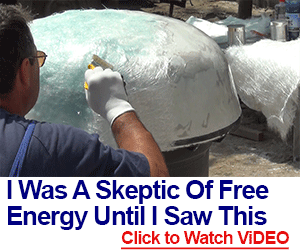Since it’s been cold lately, I’ve been doing a lot of thinking about frost protection and growing species appropriate to my area, as well as pushing non-appropriate species to grow. (I’ve got an avocado death race going right now; believe it or not, I still haven’t lost any despite multiple freezes.)
Along those lines, I just posted a new article over at Mother Earth News on how I keep my greenhouse from freezing overnight without using any electricity or gadgets:
“When I set up the greenhouse for the first time, I was excited to feel how hot it got inside as soon as I zipped the doors and windows shut. I loaded it up with all my cold-sensitve plants, then put a thermometer inside so I could keep an eye on the temperature.
Within the next few days, there was a frost predicted. The night of the frost, I shut up the greenhouse and went inside. Late at night I went out to check the thermometer. It was almost as cold inside the greenhouse as it was outside! That wasn’t good. I quickly strung up a bunch of Christmas lights, plus a few flood lamps, then plugged it all in via an extension cord.
The next morning when I went outside after breakfast to open up the greenhouse, the sun was shining brightly and it was quite warm when I stepped inside. Too warm. I checked the thermometer – it was already reading in the 90s. Uh-oh. I needed to really stay on top of my venting or I was going to cook something! So I did, diligently shutting the greenhouse on chilly nights and quickly opening it again in the morning once things had warmed up.
It came to me then. I remembered reading that some folk in tough climates used walls of water-filled barrels to absorb the heat of the sun during the day. At night, the warmth would radiate out from the barrels and keep things moderate inside. I decided to try it in my greenhouse. A friend of mine had a source for 55-gallon plastic drums so I bought eight of them and placed them at regular spacings along both walls of the greenhouse, then filled them to the top with water and screwed the bungs closed .
Sometimes it doesn’t take a giant complicated system to make a big difference.Growing something out of its range can be as easy as planting it in a different place or using the cover of existing trees to shelter new trees.
In this case, I spent $20 each for 8 barrels for a grand total of $160.00. That small investment has kept me from having to spend money on electric, plus it’s kept me from worrying about my plants roasting during warm days when I forget to open the greenhouse because I’m online, writing an article for The Prepper Project and…
Oops. That reminds me: I actually do have to go open the greenhouse…
SOURCE : theprepperproject.com
About David Goodman
David Goodman is an amateur scientist and hard-core gardener who has grown his own food since 1984. At age five, he sprouted a bean in a Dixie cup of soil and caught the gardening bug. Soon after, his dad built an 8’ by 8’ plot for him and David hasn’t stopped growing since. David writes a regular column for Natural Awakenings magazine in North Central Florida, posts on the Mother Earth News blog, owns a nursery of hard-to-find tropical edibles (www.floridafoodforests.com) and grows roughly 1.5 zillion plants on his one-acre homestead. In mid-2012, he launched www.floridasurvivalgardening.com as a place to share his ongoing experiments with tropical and temperate crops. He currently has over 20 intensive beds, multiple field plots, over 100 fruit trees, 50 chickens and ducks, and a series of ongoing experiments in-progress – all of which bring him closer each day to complete food security. David is a Christian, a husband, a father of six, a cigar-smoker and an unrepentant economics junkie. You can also read his articles on his site: Florida Survival Gardening

